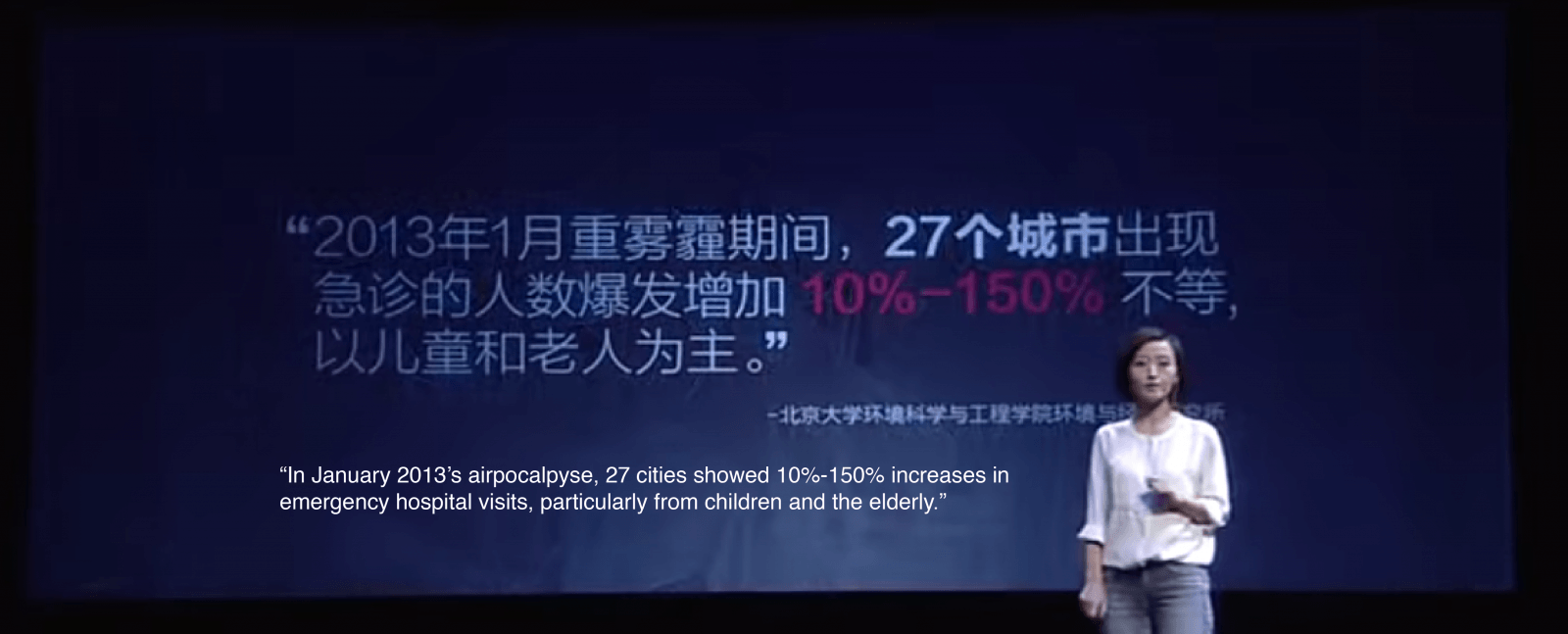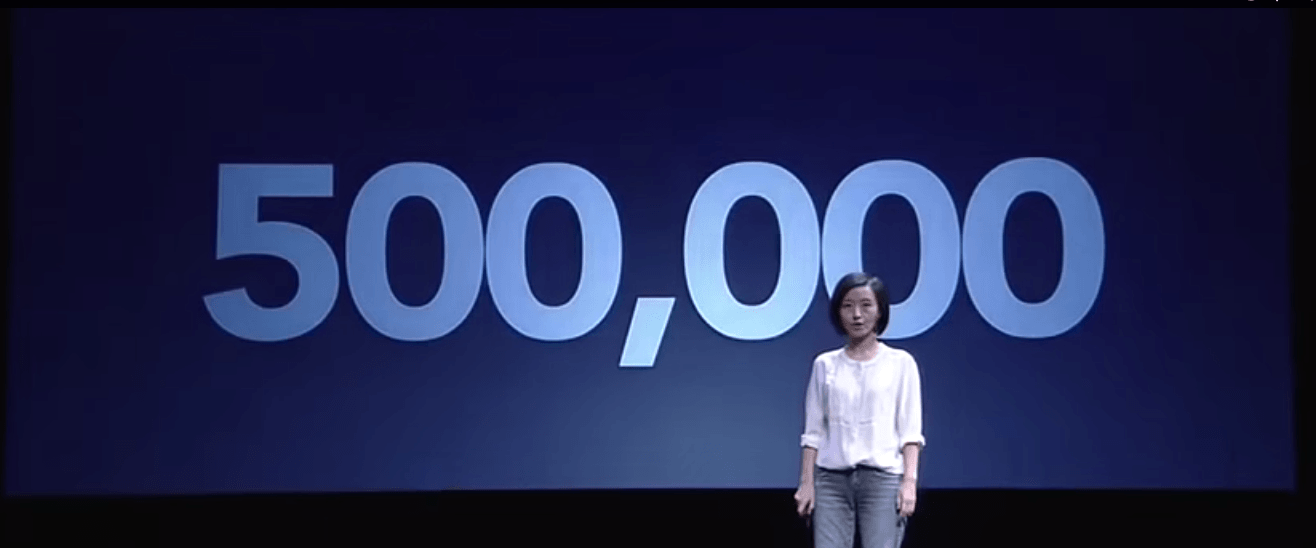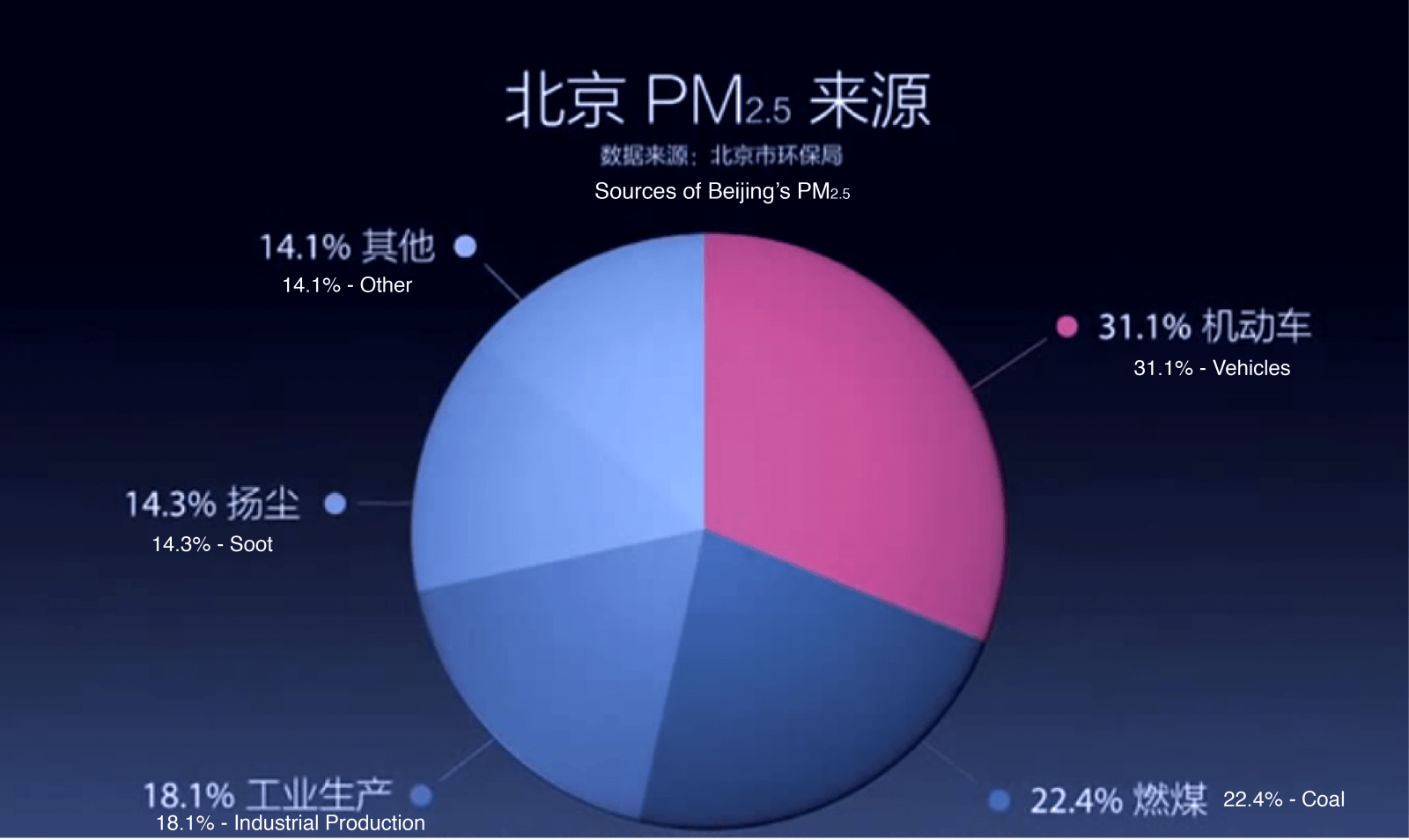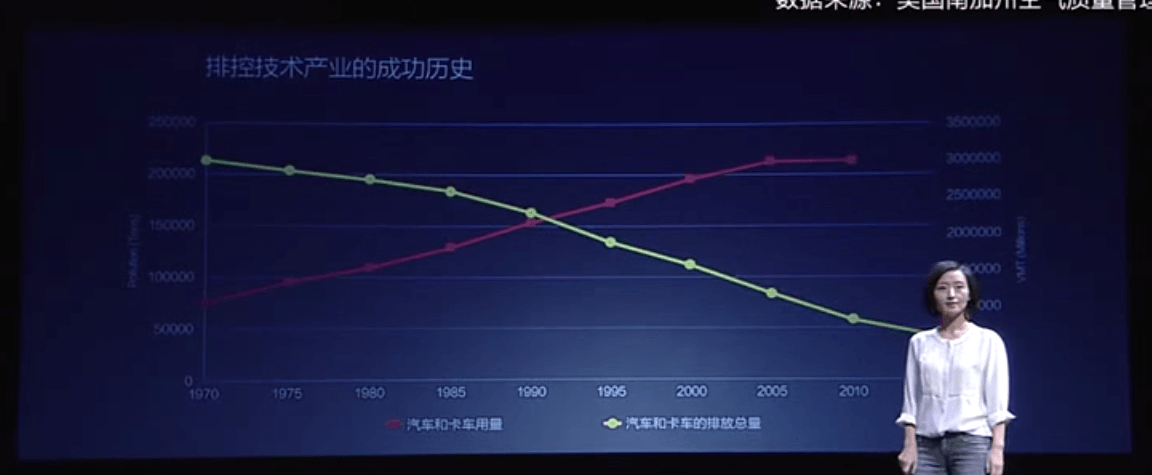A new documentary on China’s air pollution problem by a former CCTV journalist has gripped the Chinese public and is forcing the government to own up to the severity of its environmental challenge.
If you haven’t seen it already, a new 103-minute documentary Under the Dome by former CCTV journalist Chai Jing has made China’s air pollution problem go viral both within the country and abroad. Released on February 28, it received 75 million clicks the same day on video streaming sites in China and more than 70,000 views on youtube.com (the English translation is being completed here).
The film is already being dubbed China’s equivalent to Rachel Carson’s Silent Spring, which was a seminal book that linked the toxicity of pesticides to agricultural products and food chains, awakening the environmental movement in the United States during the 1960s. Describing her journey to understand the causes of China’s air pollution problem from the viewpoint of herself as a mother whose daughter was born with a benign tumor, Chai Jing makes a visceral connection between China’s explosive, unfettered economic growth and the environmental consequences.
A Few Key Takeaways
Here are a few statistics and figures from the documentary that are particularly telling of China’s air pollution problem:
1. During the 2013 ‘airpocalpyse’ in which fine particulate (PM2.5) levels soared to off-the-chart levels at 755 micrograms/m3 (the Air Quality Index scale tops out at 500), emergency hospitalization rates increased between 10 to 150 percent, particularly among children and the elderly. These hospitalization rate data were previously not released.

2. The latest Global Burden of Disease reports that air pollution is responsible for somewhere between 350,000 and 500,000 premature deaths in China.

3. Beijing’s PM2.5 pollution primarily comes from two sources: motor vehicles and coal. According to Chai Jing, you could line up the annual growth in vehicles in Beijing alone and go to Shenzhen and back (that’s around 4,336 km). Beijing has 63 cars for every 100 households, which is around double the national average for vehicle ownership, according to the latest figures. Thirty-five cities in China have more than 1 million vehicles.

4. She notes that US cities like Los Angeles have increased the number of vehicles (the red line in the figure below), but, over the same time period, have managed to reduce emissions 75 percent (yellow line). She points to strict penalties for failure to install Diesel Particulate Filters (DPFs) on heavy-duty vehicles in Los Angeles.

5. A ton of steel produced in China nets around 2 RMB in profit (about the price of a chicken egg), but requires 600 kg of coal, 3-6 tons of water, and generates 1.53 kg of sulfur dioxide SO2 emissions and 1 kg of soot.

Reactions within China
While official state media like Xinhua and recently tapped Minister of Environmental Protection Chen Jining initially praised Under the Dome, official state censors have since warned media to not promote the film. News stories from official state media that had previously endorsed the film have since been removed. A quick search on China’s main search engine, Baidu, show that many entries about the film have been deleted.
With the toothpaste already out of the tube, it will be interesting to see whether the documentary will have lasting impact on China’s public discourse regarding air pollution and environmental problems more broadly. Already, companies who manufacture air monitors, pollution treatment, and green technologies have experienced a boost since the film’s release.
The Global Context
In the 2014 Environmental Performance Index (EPI), China ranked 118 out of 178 countries. Notably, the country ranked last in terms of average exposures to PM2.5. Because many countries do not monitor or report PM2.5 data publicly (see the Interactive Air Pollution map we published in The Atlantic), we opted to use satellite-derived measures of average exposure to PM2.5.
Although air pollution in China is bad (arguably, it’s the world’s worst), the map above shows that there are many other countries and cities around the world suffering equally poor air quality and where Under the Dome documentaries to raise public awareness have yet to emerge. Many countries in East and South Asia, including India, contain cities with the world’s worst air pollution. New Delhi last year earned the dubious designation from the World Health Organization as the “world’s most polluted city.”
Air quality is not a China problem. It’s a global problem that everyone — regardless of citizenship — must confront. We’re all under the same dome.

Recent Comments